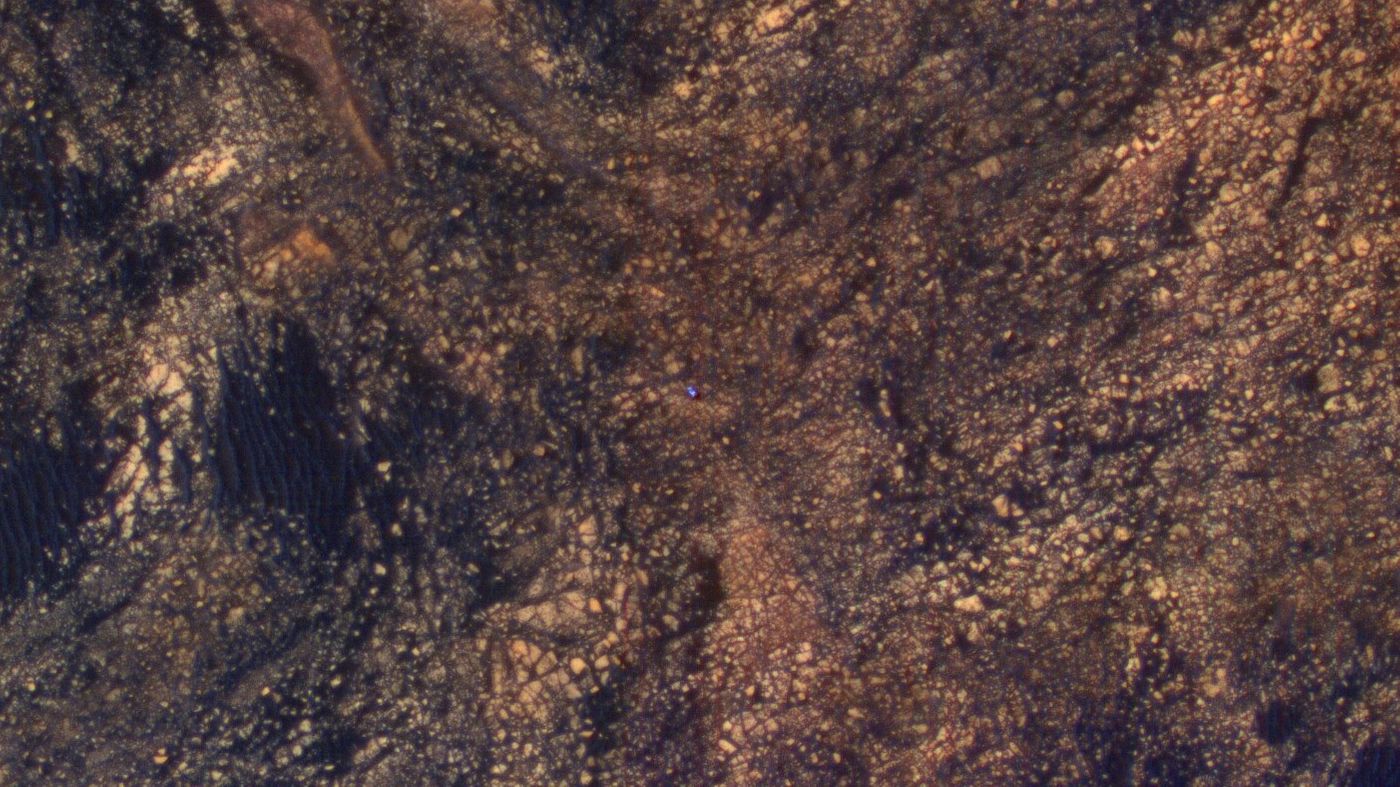Mars Curiosity Rover is Spotted From an Eye in the Sky
Have you ever wondered what the Mars Curiosity Rover might look like from above? Well now you don't have to wait any longer to find out.
The Mars Reconnaissance Orbiter recently photographed Curiosity with its High Resolution Imaging Science Experiment (HiRISE) camera while it was in the midst of scanning and mapping the red planet’s surface.
Image Credit: NASA/JPL-Caltech/Univ. of Arizona
While this happens from time to time, the latest shot is quite dramatic and shows just how insignificantly-small the SUV-sized autonomous explorer is when compared to its surroundings.
It appears as the small bluish dot in the center of the following photograph, which reveals terrain associated with Mount Sharp, a place Curiosity has been exploring for the last several years.
Related: Curiosity Rover takes a selfie at its drilling site
Worthy of note, Curiosity isn’t really blue; this is a false-color image that emphasizes contrast to help us see stark differences in terrain much better. If you were to peer down with your own eyes, you would see a different color scheme.
Curiosity is currently exploring the red planet autonomously via intelligent software that picks its own viable targets that may hold important clues into Mars’ checkered past.
Related: Curiosity Rover went into safe mode, but NASA got things back under control
Once it hones in a target, it’s onboard laser system blasts the rock and then the rover begins a chemical analysis from the resulting airborne dust with its ChemCam geochemical spectrometer instrument.
A recent study published in the journal Science Robotics has gone into great detail about the use of Curiosity’s autonomous exploration system, noting that it has been utilized since the initial software update uploaded in 2016.
Autonomous exploration is useful for scientists because there are times when the rover ends up in places that are more difficult to send signals to. Autonomy allows the rover to make decisions on its own and then actively report its results back to Earth from time to time.
Although it's comforting to see that Curiosity is still kicking today, an even more advanced lander is set to travel to Mars to explore its terrains in just a few more years. Mars 2020 is expected to launch in, you guessed it, 2020, which is probably a good thing since Curiosity is getting old and starting to break down.
The primary goal will be to search for signs of life, somethings we’ve already been trying to accomplish, but it will be landing at a very different site that researchers believe has the highest probability of returning useful results; there are currently numerous landing location candidates, as researchers haven’t quite decided where to put it yet.
Worthy of note, Mars 2020 will come equipped with the most advanced technology we have today for this sort of exploration research. It should be interesting to see what it finds when the time comes; in the meantime, we’ll just have to rely on good-old Curiosity.









